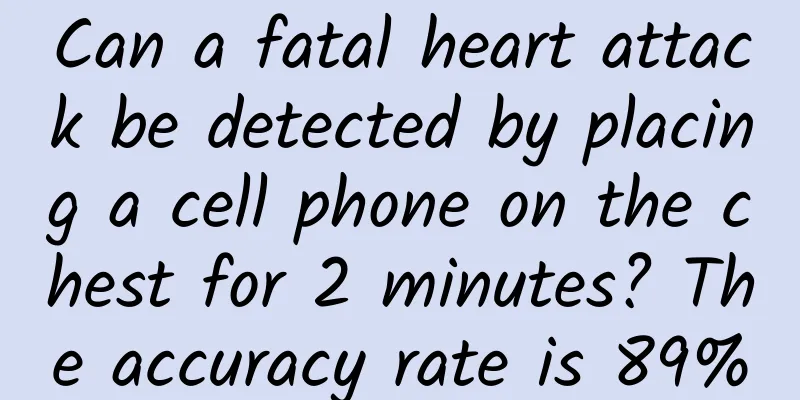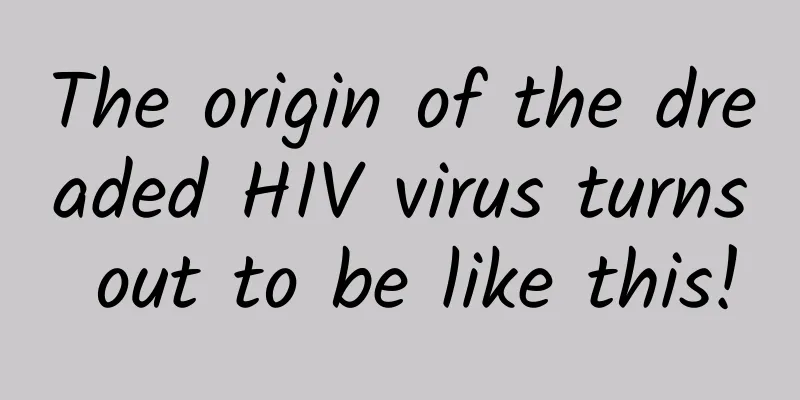Can a fatal heart attack be detected by placing a cell phone on the chest for 2 minutes? The accuracy rate is 89%

|
Heart failure (HF) is a serious manifestation or late stage of various heart diseases. Once diagnosed with HF, repeated hospitalization may be required, and the risk of death within 5 years is as high as 51.8%. Early detection of heart failure can reduce mortality, but symptoms of heart failure often overlap with other diseases (such as dyspnea, fatigue and lower limb edema). Diagnosis currently relies on blood tests, cardiac ultrasound and other examinations and doctors' judgment, and is often not made in a timely manner. A study in the Journal of the American College of Cardiology (JACC) shows a new method to easily identify heart failure: place a smartphone flat on your chest for 2 minutes. Copyrighted stock images, reprinting and using may cause copyright disputes Motion sensors are in everyone's hands Smartphone With each heartbeat, the heart expands and contracts, twisting and rotating, and these movements can be transmitted through the chest to the skin surface . When heart failure occurs, that is, when the heart's pumping function decreases, the heart's impact on the chest wall decreases, and the doctor may feel a weakened apex beat by hand. Judging by feel alone requires experience and is rough. In fact, each of us has a tool at hand that can precisely sense movement: a smartphone. Almost all smartphones today are equipped with microelectromechanical sensors (MEMS), which include accelerometers for measuring linear acceleration and gyroscopes for measuring angular velocity, and can detect linear and rotational motion in multiple directions. Therefore, by placing the phone on the chest, the sensor can collect the subtle movement signals transmitted by the heart to the chest wall. After analysis, these data can provide a lot of meaningful information. There have been studies using data measured by accelerometers and gyroscopes to identify atrial fibrillation, aortic valve stenosis and coronary artery disease. Heart movement, and MEMS (accelerometers measure linear acceleration, gyroscopes measure angular velocity) | References [2] Put the phone in front of your chest for 2 minutes Heart failure identification accuracy rate is 89% This study used mobile phone sensors to identify heart failure and collected and analyzed data from 1,003 people at three hospitals in Finland and the United States, including 217 patients with confirmed heart failure and symptoms, and 786 controls. During the test, the participants lie on their backs on the bed, shirtless or wearing a thin piece of clothing, and place the mobile phone flat on the sternum for 2 minutes , during which time they can breathe normally. The software installed by the researchers on their mobile phones records the chest wall movement detected by the mobile phone. The movement is consistent with the three heart sound periods in cardiac auscultation, and contains information such as the amplitude, area and time interval of the signal. Afterwards, this information is uploaded to the research center via the network and analyzed . The algorithm selects the signals of the 10 closest heartbeats, filters out the clutter and focuses on the changes brought about by the systolic and diastolic movements. The study first used the data of half of the patients and the corresponding number of controls to establish the identification criteria for heart failure, and then tested the accuracy of the criteria among the remaining participants. The chest wall motion data measured by the mobile phone is basically consistent with the three heart sound periods | References [2] The results showed that the accuracy of heart failure identification was 89%, the sensitivity was 85%, and the specificity was 90%. The accuracy of identification did not vary much among different populations, including different ages, genders, body mass indexes, heart failure grades, and those with and without atrial fibrillation. Receiver operating characteristic curve for identifying heart failure using cardiac motion data | References [2] Maintaining good health at home It may become possible This study shows that simple assessment of heart function using motion sensors built into smartphones is feasible and could potentially enable remote monitoring of patients with heart failure. Although the MEMS technology in the mobile phone is not designed for recording heart movement, it can still obtain reliable signals in more than 99% of the participants and obtain an accuracy rate of 89%. In other words, the smartphones we use now have accurate sensors, and recognition does not require the purchase of any additional hardware, but only requires software to collect information and make judgments. In addition, the method used in this study is simple and fast, and can identify a wide range of people. This study also has some shortcomings. The controls selected in the Finnish hospital did not undergo cardiac ultrasound examination, so patients with heart failure without symptoms and signs could not be excluded. In addition, there were differences in the demographic characteristics between the heart failure group and the control group. The average age of patients with heart failure was older (64 vs. 61 years old), there were more men (64.9% vs. 41.4%), and there were more comorbidities. This may have led to deviations in the establishment of identification criteria. Therefore, further research is needed to verify this result. In addition to using mobile phones to detect heart movement, researchers are also exploring other methods to remotely determine heart failure. Studies have shown that using artificial intelligence to analyze electrocardiograms recorded by smart watches can help determine heart failure and even predict the risk of heart failure or arrhythmia in the next 10 years. Currently, the technology of using smart devices to remotely judge diseases is still in its early stages and cannot be used to diagnose diseases. However, as sensor technology and algorithms continue to improve, it is expected to revolutionize healthcare, making it possible to remotely prevent, diagnose and treat diseases, narrow the gap in medical resources, and help all users stay away from the threat of disease. References [1]Zachi I. Attia, David M. Harmon, Jennifer Dugan, Lukas Manka, Francisco Lopez-Jimenez, Amir Lerman, Konstantinos C. Siontis, Peter A. Noseworthy, Xiaoxi Yao, Eric W. Klavetter, John D. Halamka, Samuel J. Asirvatham, Rita Khan, Rickey E. Carter, Bradley C. Leibovich, Paul A. Friedman. Prospective evaluation of smartwatch-enabled detection of left ventricular dysfunction. Nature Medicine, 2022; DOI: 10.1038/s41591-022-02053-1 [2]Haddad F, Saraste A, Santalahti KM, Pänkäälä M, Kaisti M, Kandolin R, Simonen P, Nammas W, Jafarian Dehkordi K, Koivisto T, Knuuti J, Mahaffey KW, Blomster JI. Smartphone-Based Recognition of Heart Failure by Means of Microelectromechanical Sensors. JACC Heart Fail. 2024 Mar 22:S2213-1779(24)00165-3. [3] Chinese Society of Cardiology, Chinese Medical Association Society of Cardiovascular Medicine, Chinese Medical Association Heart Failure Committee, et al. Chinese Guidelines for the Diagnosis and Treatment of Heart Failure 2024. Chinese Journal of Cardiology. 2024;52(03):235-275. [4]Taylor CJ, Ordóñez-Mena JM, Roalfe AK, Lay-Flurrie S, Jones NR, Marshall T, Hobbs FDR. Trends in survival after a diagnosis of heart failure in the United Kingdom 2000-2017: population based cohort study. BMJ. 2019;364:l223. [5] https://cardiosignal.com/ Planning and production Source: Guokr (ID: Guokr42) Author: Dai Tianyi, former attending physician of the Department of Cardiology at Beijing Anzhen Hospital Editor: Zhong Yanping Proofread by Xu Lailinlin The cover image and the images in this article are from the copyright library Reprinting may lead to copyright disputes |
Recommend
How to do the annual review of Douyin Blue V? How much does the annual review of Douyin Blue V cost?
1. What is the use of Douyin enterprise certifica...
The strongest sandstorm this year is coming, why can't the shelterbelt forest stop it?
When I woke up one night, my glass windows were c...
Qingfeng Xiantan·The first phase of Douyin music account monetization, daily income of 800+ suitable for ordering gameplay
Why did I choose to create a music account? There...
Pioneer 10: A tour of the planets
Pioneer 10 was the first probe to successfully ac...
"Li Ziqi" goes overseas, the public opinion behind her sudden popularity
There are thousands of internet celebrities, and ...
App launch growth: user awakening methods
In daily App promotion , attracting new users and...
Super complete and detailed! 4 important links of user operation!
The first thing to be clear is that the links of ...
How can tool-type products achieve long-term user growth and retention?
How can tool products break through the dilemma o...
Do you want to slap a mosquito to death? Dinosaurs may have thought so too
Mosquitoes have a way of ruining our mood every s...
Apple executives: We will not consider supporting multiple users for Face ID in the short term
Apple's current Face ID only supports a singl...
Beijing Film Festival will be held on August 22 (with original text)
The 10th Beijing International Film Festival will...
What is the appropriate bandwidth for renting an e-commerce server?
The rapid development of Internet technology has ...
The probability of an asteroid hitting the Earth is 3.1%? Don't panic, it's just an estimate! The defense system is already being deployed
Recently, the topic that an asteroid numbered &qu...
Today's prosperity is what you wish for! Tribute to the older generation of aerospace people
As the bright Chinese space station passed throug...
One TikTok video generated 100,000 new app activations and 1 million followers in 58 days. How can we seize the benefits of TikTok?
Last year, at the annual meetings of major compan...









